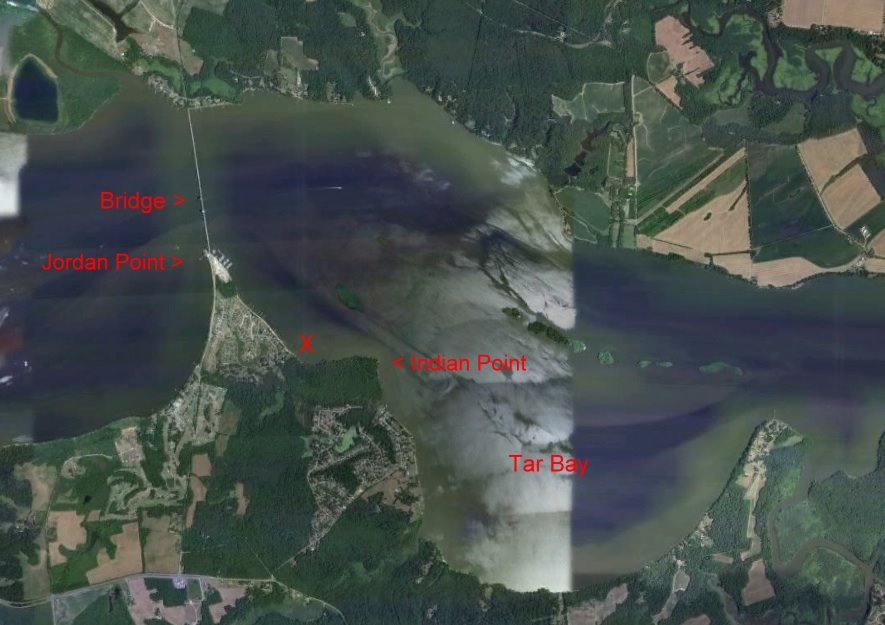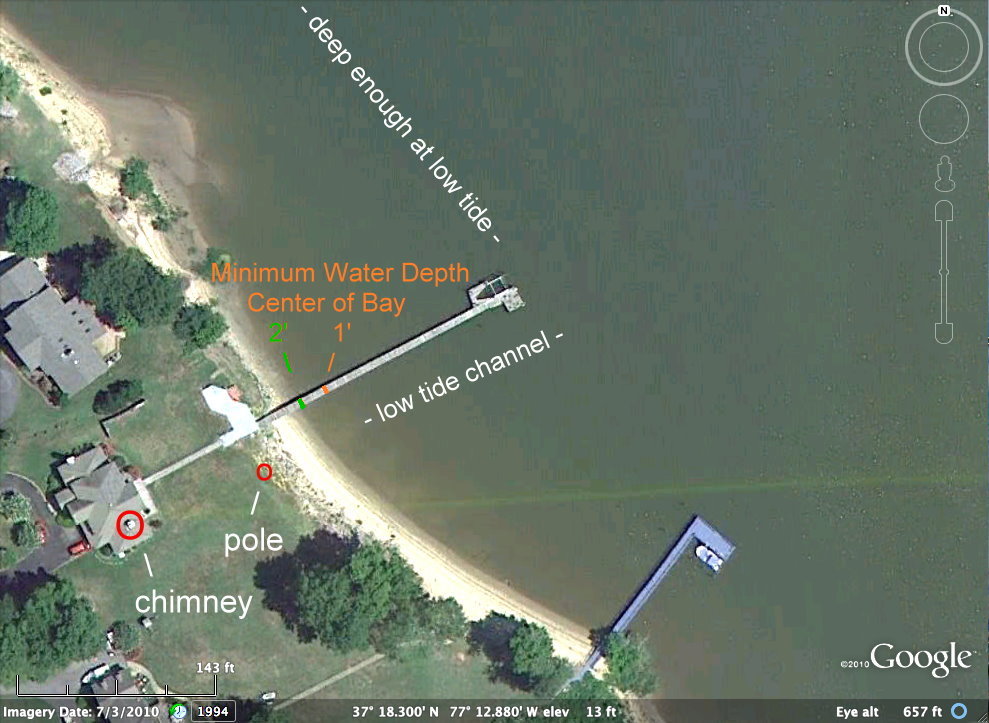

| Coordinates: (all formats indicate the wrong house in GoogleMaps) |
N37º 18' 17.77", W77º 12' 53.29" 37º 18.300', -77º 12.880' 37.305000, -77.215000 |
| Radio frequency: | 123.45 |
| Phone: | 804-543-7110 |
| Street address: | 10463 Jordan Parkway, Hopewell, VA 23860. (Google it for an aerial view of the river and the correct house.) |


| WATER LINE AT |
TIDE state |
DEPTH of shallowest area in center of bay |
|---|---|---|
| GREEN IN-shore (west) stripe | medium |
at least 2 feet deep everywhere. |
| ORANGE OFF-shore (east) stripe | low | at least 1 foot deep. |
